Morris Memorial Building
Introduction
Text-to-speech Audio
This five-story building was designed by the prominent architectural firm of McKissack & McKissack and constructed in the mid-1920s for the National Baptist Convention, USA, an African-American Christian denomination. The building held the group's Sunday School Publishing Board offices. The Morris Memorial Building was listed in the National Register of Historic Places in 1985 for its significance in architecture and in Black history. It is also part of a National Register themed listing of four buildings in Nashville associated with McKissack & McKissack. In recent years, there have been plans to repurpose the historic structure, including a plan to add extra floors, and a second plan for the city to buy the building.
Images
Morris Memorial Building in 2010 photo (Andrew Jameson)
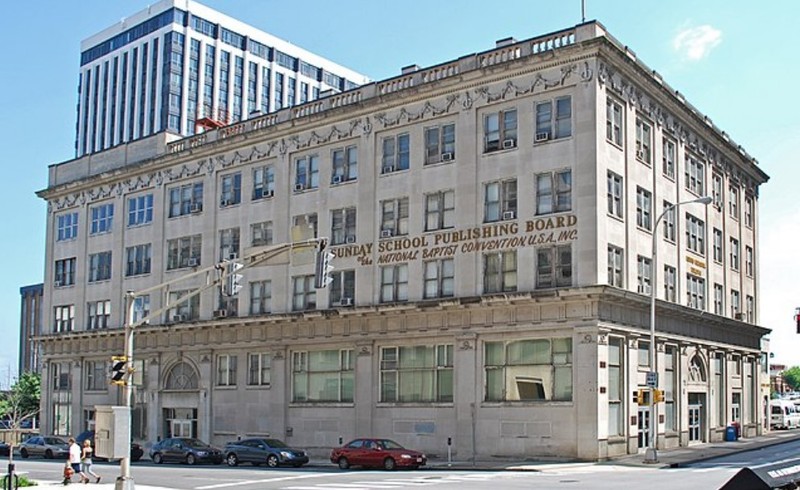
Decorations on cornice of Morris Memorial Building's east side in 1984 (Thomason and Associates)
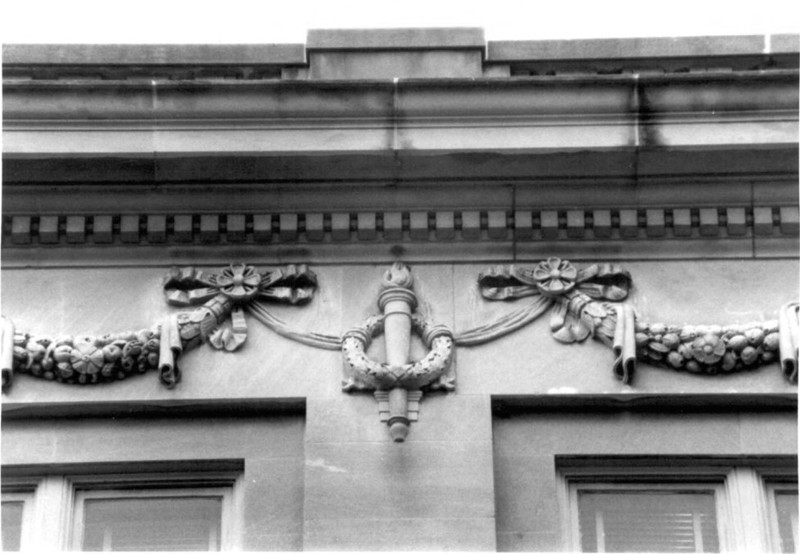
View of skylight above lobby of Morris Memorial Building in 1984 (Thomason and Associates for NRHP)
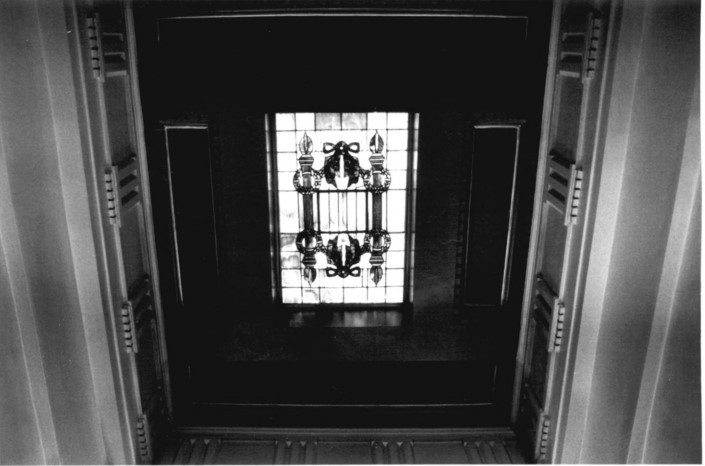
Morris Memorial Building (green arrow) with roof garden on 1950 Sanborn map (Vol. 1 p. 10)
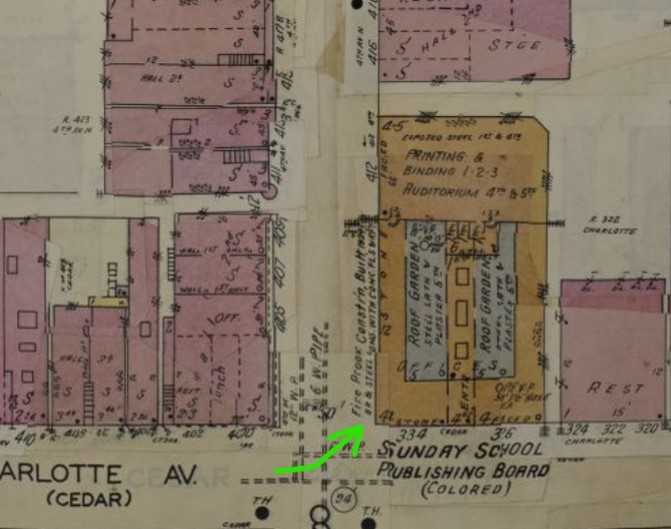
1899 ad by National Baptist Publishing Board, then at 523 N. Market St., Nashville
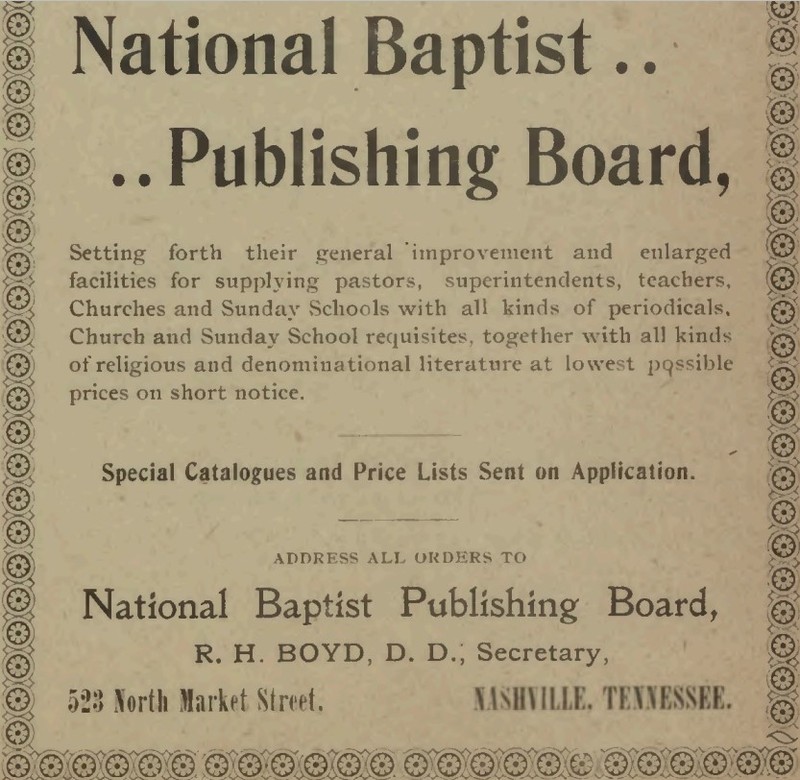
Backstory and Context
Text-to-speech Audio
The Neoclassical building was designed in 1924 by the architectural firm established by African-American brothers Calvin L. (1890 - 1968) and Moses McKissack III (1879 - 1952) in 1906. The brothers were born in Pulaski, Tennessee and obtained architectural degrees through correspondence coursework. They were grandsons of a man who had been enslaved on a plantation in Charlotte, North Carolina owned by William McKissack, a master builder, and had been trained as a builder; their father also worked in construction. When architectural licensing laws went into effect in Tennessee in 1921, McKissack & McKissack became the first registered African-American architects in the state. The firm opened an office in Washington, D.C. in 1990, headed by a granddaughter of Moses III named Deryl McKissack; the company is still in business, with projects worldwide.
The Morris Memorial Building opened in 1926 and was named for Elijah Camp Morris (1855 - 1922), National Baptist Convention USA, Inc.'s first president (1895-1922). He had been born enslaved in Georgia and studied at Nashville Normal and Theological Institute. Reverend Morris served as pastor of Centennial Baptist Church in Helena-West Helena, Arkansas from 1879 to 1922. He helped found a Baptist Seminary in Little Rock which became Arkansas Baptist College in 1886, and helped start a denominational newspaper, the Arkansas Times. Rev. Morris served multiple times as a delegate to the Republican National Convention between 1888 and 1904. In 1894, he was head of the Foreign Missionary Convention, one of several Black Baptist organizations that merged to create the National Baptist Convention of the United States of America. The organization began with about two million members and has grown to over eight million, based in Nashville.
By the 1950s, the street name was changed from Cedar to Charlotte Ave. The Morris Memorial Building is the only remaining building that was originally associated with the cluster of African-American businesses in the core of downtown Nashville. The rest moved elsewhere in the mid-twentieth century as part of the Capitol Hill Redevelopment Project. In the late 1960s, after neighboring buildings were removed, limestone sheathing was added to the building's north and east walls, to match the earlier facades on the steel and concrete structure. There are major entrances on both Charlotte and Fourth avenues. By 1978, the Morris Memorial Building contained the offices of the Baptist Sunday School Publishing Board, architects McKissack & McKissack, Citizens Savings Bank and Trust Company, and Atlanta Insurance Company's Nashville location. The architectural firm, headed by William DeBerry McKissack (a son of Moses III), had been tenants since the building they designed was finished.
A plan by developers to renovate the building and add eight to ten stories on top has landed the Morris Memorial Building on the 2016 Nashville Nine list by Historic Nashville Inc. of the city's most endangered historic places. There were plans for the City of Nashville to purchase the building for $13 million and renovate it, but the idea fell through by the end-of-2019 deadline due to municipal budget constraints and possibly due to a change in city leadership. The new mayor's office announced in January 2020 that the city was willing to support the current (National Baptist Convention) and prospective owners' efforts to preserve the building.
Sources
Bashir, Catherine W. McKissack and McKissack (1905 -), North Carolina Architects and Builders, A Biographical Dictionary. January 1st, 2018. Accessed September 22nd, 2022. https://ncarchitects.lib.ncsu.edu/people/P000656.
Clancy, Sean. "Pioneer Baptist: Exhibition on influential Rev. E.C Morris and Centennial Church details role of religion during Jim Crow." Arkansas Democrat-Gazette (Little Rock) February 2nd, 2021. online ed.
Clay, Darren Jefferson. Morris Memorial Building/ Delta Sigma Theta Sorority, Inc. Nashville Alumnae Chapter, Historical Marker Database. December 28th, 2021. Accessed September 20th, 2022. https://www.hmdb.org/m.asp?m=174217.
Garner, Meg. "Private group looks to buy historic downtown building, instead of Metro." Nashville Business Journal (Nashville) September 19th, 2019. Government & Regulations sec.
Garner, Meg. "Mayor John Cooper punts $13 million deal for historic downtown building." Nashville Business Journal (Nashville) January 3rd, 2020. Government & Regulations sec.
Historic Nashville Inc. Morris Memorial Building - 330 Charlotte Avenue, Historic Nashville Inc. December 3rd, 2019. Accessed September 20th, 2022. https://www.historicnashvilleinc.org/nashville-9/morris-memorial-building-2/.
Metro Historical Commission Foundation. Morris Memorial Building, Nashville Sites. Accessed September 20th, 2022. https://nashvillesites.org/records/b46fd5cd-639d-4f03-bc4f-2f752b741423.
Ward, Getahn. "2016 Nashville Nine: Music City's most endangered historic places." The Tennessean (Nashville) October 10th, 2016. online ed.
Weathers, Diane. McKissack & McKissack: Architects & Engineers: Master Builders from the Past, Fight for a Future. Black Enterprise. March 1st, 1978. 39 - 42.
https://en.wikipedia.org/wiki/Morris_Memorial_Building#/media/File:MorricMemorialBuildingNashville.jpg
National Park Service (NPS): https://npgallery.nps.gov/AssetDetail/NRIS/85000046
NPS: https://npgallery.nps.gov/AssetDetail/NRIS/85000046
Library of Congress (LOC): https://www.loc.gov/item/sanborn08356_011/
LOC: National Baptist Magazine, December 1899 issue, p. i
